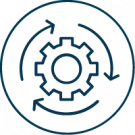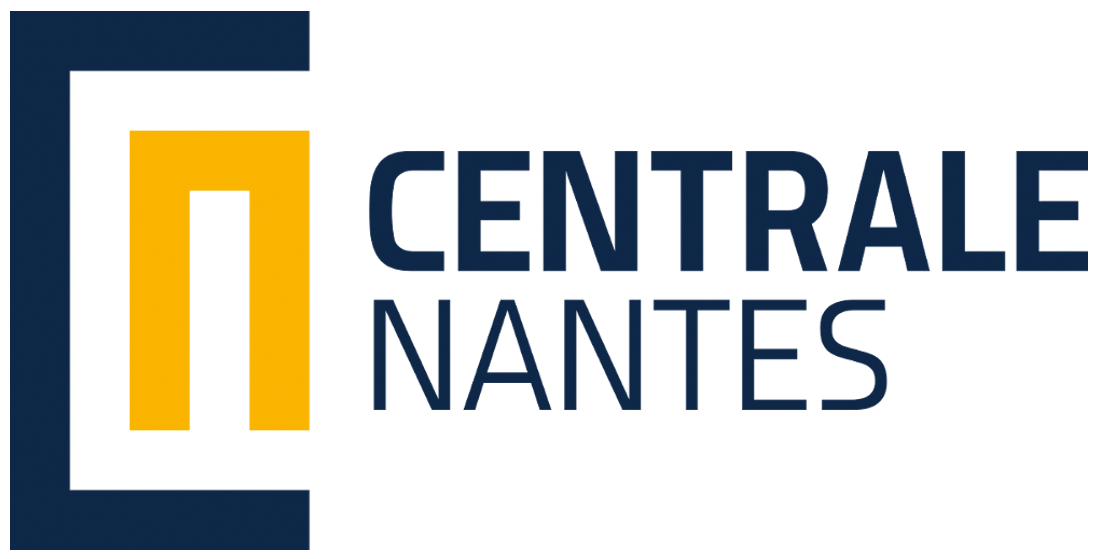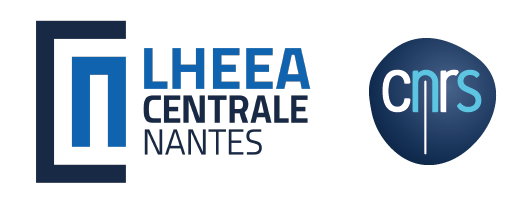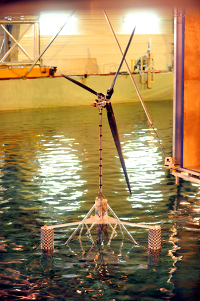
Background
Experimental testing is an important step into the design process of floating wind turbines. Testing at different scales is necessary as a project progresses. The experimental modeling of floating wind turbine requires tackling several challenges in order to represent as closely as possible the influence of the rotor on the whole structure. The physical phenomena and the forces due to wind and waves are not governed by the same laws of similitude. This incompatibility requires modeling compromises that often limit the representation fidelity a floating wind turbine in operation. The SOFTWIND project aims at developing a robust experimental platform that tackles these similitude issues by using a software in the loop approach.
Scientific advances and innovation
One of the main challenges of software-in-the-loop approaches is the communication speed between hardware and software. To be tackled, the methodology both requires a fast numerical aerodynamic software and a fast communication procedure. This constraint is not always well addressed that has the consequence to alter the response of the model scale and leads to a bias during the analysis of the results. The SOFTWIND project gathers experts in control command that will provide an efficient and innovative process for the communication between the hardware and the numerical simulator. Innovation will also come from an experimental arrangement of rotational masses that will be used for representing the rotor inertial loads.
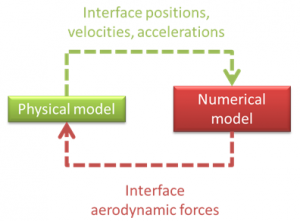
Expected technical and economic impact
The SOFTWIND project will contribute to a better understanding of the behavior of floating wind turbine and especially of the influence of the turbine control on the overall dynamics. It will provide a robust and accurate validation tool that will help both developers and researchers to accelerate their developments, and mose specially with regard to the optimization of the compromises between stability, aging of the structure, and electrical production.
Key project milestones
- 24/10/2017: - Kick-Off
- January 2018: - First tests
- 2019: - Tests of the D-ICE Eng. Controls laws
- October 2020: - End of the project
Demonstrator
An experimental platform based on a software-in-the-loop approach and dedicated to floating wind turbine.
Results
A test bench with a single actuator has been tested from December 2018 to January 2019. The purpose of this set up was the validation of :
- the communication protocols,
- the real-time execution of the numerical model,
- the motion and force observers,
- the preliminary actuator model identification.
Preliminary validation tests consist in imposed motions by means of a hexapod (cf. Figure below) and will be followed by wave tank tests next September.
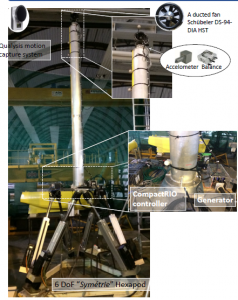
Fig. 1 : Experimental setup currently used for the validation of the communication protocols.
In mid-November 2019, the SOFTIND emulation system was used within the framework of the H2020 Blue Growth Farm project (cf. Fig. 2).
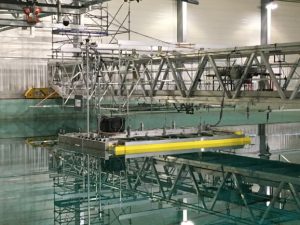
Figure 2: The SOFTIND emulation system used within the framework of the H2020 project Blue Growth Farm.
From Dec 2019 till March 2020, several wave tank tests were performed for validating and assessing the performances of whole emulation system. Thanks to the good performances, first tests were conducted that were dedicated to the validation of rotor control laws developed by D-Ice Eng. as well as LS2N lab.
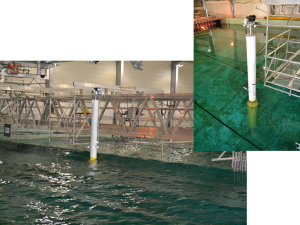
Figure 3: The SOFTWIND experimental set up composed of the rotor emulation system mounted at the top of a spar-type floating substructure during validation tests of rotor control laws.
Publications and papers published
PhD
- 2020-Experimental modelling of a floating wind turbine using a ‘software-in-the-loop’ approach-Centrale Nantes-Vincent ARNAL, 11 décember 2020
Oral communications
- Poster SOTWIND, V Arnal, JC Gilloteaux, F Bonnefoy, S Aubrun. French American Innovation Day à Boston 18-19 mars 2019.
- Research investigations on multi physic and multiscalekey topics for floating wind turbine behavior, Aubrun S, Gilloteaux JC, Kerkeni S, Lynch M. FOWT, April 24 26 2019
- Hybrid model testing of floating wind turbines, V Arnal, JC Gilloteaux, F Bonnefoy, S Aubrun.15 th EAWE PhD seminar , Nantes, 29-31 octobre 2019.
- Hybrid model testing of floating wind turbines : test bench for system identification and performance assessment. V Arnal, JC Gilloteaux, F Bonnefoy, S Aubrun. 38th International Conference on Ocean, Offshore and Arctic Engineering (2019).
- Hybrid model testing of floating wind turbines, V Arnal, JC Gilloteaux, F Bonnefoy, S Aubrun, WESC – 2019
- Effects of platform motions on FOWT rotor performances, JC GILLOTEAUX, S. AUBRUN, F. BONNEFOY. EERA JPWind en Octobre 2020 en visio conférence.
- Influence of wind turbine thrust modelling methodology on global motions, V. ARNAL, JC GILLOTEAUX, F. BONNEFOY, S. AUBRUN. Les Journées de l’Hydrodynamique » En ligne, 26 Novembre 2020.
- Software in the Loop testing of FOWT: assessment of performance and elements of design regarding SOFTWIND experimental set-up, BONNEFOY F., ARNAL V., GILLOTEAUX J.-C. WESC. En ligne, Mai 2021
Article
- Article to come.
Prospects
To be part of National, European or International collaborative projects with public and private partners.
